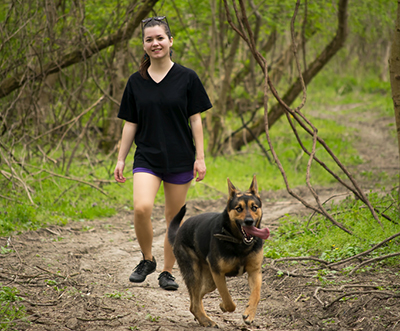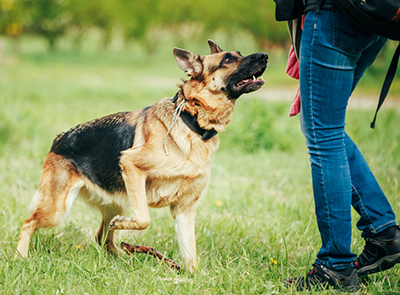Don’t Worry, He Won’t Bite
 Here’s a question for all you readers who are parents, walkers, bicyclists, or runners. Have you ever been engaged in any of these activities when a strange, leashless, dog bounds up to you or yours, seemingly out of nowhere, and gets too close to make you really comfortable? And then the owner comes bounding up behind, saying something like the words in the title to this commentary. I don’t know about you, but when it happens to me (and it often has, because I am a lifelong runner with many miles on my shoes), I am not reassured. And if you are a parent, of course you should never trust someone else’s assessment of their dog’s proclivities, most especially the owner. Children, walkers, runners, and bicyclists are bitten by strange dogs at an alarming rate, often despite the dogs’ owners’ quite different assessment of their beasts’ temperament.
Here’s a question for all you readers who are parents, walkers, bicyclists, or runners. Have you ever been engaged in any of these activities when a strange, leashless, dog bounds up to you or yours, seemingly out of nowhere, and gets too close to make you really comfortable? And then the owner comes bounding up behind, saying something like the words in the title to this commentary. I don’t know about you, but when it happens to me (and it often has, because I am a lifelong runner with many miles on my shoes), I am not reassured. And if you are a parent, of course you should never trust someone else’s assessment of their dog’s proclivities, most especially the owner. Children, walkers, runners, and bicyclists are bitten by strange dogs at an alarming rate, often despite the dogs’ owners’ quite different assessment of their beasts’ temperament.
What’s going on here? Two things determine a dog’s behavior. One is the dog’s history, and the other is its present circumstances. Both are at play when we are reassured of the dog’s temperament and when we are bitten. Different breeds of dogs are known to have different temperaments, or long-term historical ways of behaving. Some of these temperamental characteristics are genetic and many others are learned. They are analogous to personality traits in humans, who also have characteristic ways of responding that are the result of both genetics and learning. But personality traits are not things, they are histories of reinforcement and thus subject to change and modification by circumstances. Some traits are harder to change than others, but even the sweetest Golden Retriever can be provoked to aggression if the circumstances demand it.
 Personality traits and temperament can be either complemented by or trumped by circumstances. The behavior of a dog is, like the behavior of any living creature, subject to what we call stimulus control. Behavior that occurs under one set of circumstances, for example around friends and neighbors, may be quite different than that occurs around strangers in strange situations. The dog running free on the beach is not necessarily the same dog as the one laying calmly in front of the fireplace. They may be similar, but owners and others shouldn’t be surprised if they are not. (I had one perplexed owner whose dog nipped my heel tell me recently that “well, he never does this at home, implying that somehow I caused his dog to misbehave just by being there.”
Personality traits and temperament can be either complemented by or trumped by circumstances. The behavior of a dog is, like the behavior of any living creature, subject to what we call stimulus control. Behavior that occurs under one set of circumstances, for example around friends and neighbors, may be quite different than that occurs around strangers in strange situations. The dog running free on the beach is not necessarily the same dog as the one laying calmly in front of the fireplace. They may be similar, but owners and others shouldn’t be surprised if they are not. (I had one perplexed owner whose dog nipped my heel tell me recently that “well, he never does this at home, implying that somehow I caused his dog to misbehave just by being there.”
People and dogs do behave in characteristic, often predictable ways. But they do not do so because of some mental or personality process that guides and directs behavior from within. Personality traits have developed as a history of learning to respond in characteristic ways. These traits are determined by their consequences, past and present, and by the circumstances in which the organism finds itself. Dog owners attesting to the categorical gentleness of their beasts are naïve and parents, walkers, runners, and bicyclists who believe what the owners say are equally naïve.



